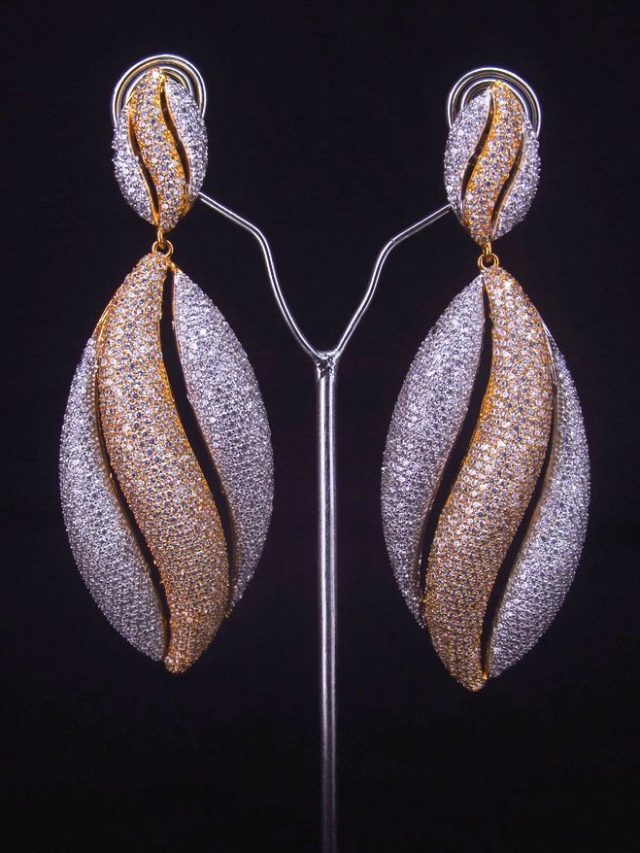
Provenance has never been more important for collectors of rare diamonds and gemstones. WILLIAM GANT unveils the ‘mysteries’ of the fancy colour diamond market.
We all know the value of a diamond varies considerably according to its qualities. And while the 4Cs – colour, clarity, cut,
carat – are the most familiar to the typical diamond consumer, when it comes to colour stones, two of the four can become more confusing.
That is, providing a certificate from a reputable diamond laboratory declaring a white diamond’s qualities leads to consumer confidence that they have purchased precisely what they had intended to buy – particularly since they are unlikely to be able to grade the stones themselves.
However, when fancy colour diamonds come into play, the importance of certificates takes on a whole new dimension.
For example, the value difference between a Fancy and Fancy Light saturation is enormous; the presence of secondary and even tertiary colours can send the value diving or soaring, depending on the hue; and the overall brightness and tone can significantly affect the value.
When it comes to important fancy-coloured diamonds, it goes without saying that certificates are sine qua non – essential – when making a purchase.
And then we have the question of provenance. From where did the diamond originate?
Provenance has become a crucial factor for collectors of the legendary Argyle pink and violet diamonds. Such incredibly rare stones from the now-closed Argyle diamond mine in the remote Kimberley region of Western Australia are as distinct as they are beautiful.
The pinks possess a warm, feminine tone like the shades of cherry blossoms, distinct from the colder tones or orangey hues from deposits elsewhere.
The violets redefined how the laboratories classified this colour category; they are a standout among fancy coloured diamonds not only for belonging in the highest end of the frequency band of colour, but also because of their unique origin of colour.
That said, not many people are aware that pink diamonds have also been mined in South Africa, Canada, Russia and Brazil. However most consumers want an Argyle pink, and they want to be sure they get what they paid for.
So, if 90 per cent of the world’s pink diamonds have been discovered in Western Australia, it’s important that the other stones are not passed off as ‘Argyle pinks’.
Unfortunately certificates from independent labs typically do not state the origin of the stone. It comes as no surprise then that many collectors of Argyle pinks and violets will demand certificates issued by the mine itself, to prove beyond doubt that the stones originated from the Argyle deposit.
However, Argyle-certified stones are becoming scarcer by the day with the mine no longer in production. Demand continues to be intense. The value of pinks and violets have grown; with limited supply and high demand, it is a simple economic reality.
Importance of origin
What may not be well-appreciated is that Argyle certificates – linked to the stones by laser inscription – were only relatively recently introduced in the mine’s life cycle. The issue of certificates for stones weighing 0.20 carats and above only commenced in 2005; it was over a decade later when smaller stones such as 10-pointers began to be supplied with certificates.
This means that the vast majority of pink and violet diamonds from the Argyle deposit – including from the peak of the mine’s production around the turn of the millennium, when Argyle produced fully a third of the world’s diamonds – are not certified with inscriptions to link them.
The consequence of this is that collectors who focus only on Argyle-certificated pink and violet diamonds may miss out on the opportunity to acquire these beautiful Australian treasures. Not to mention paying a significant premium for that ‘paper’.
Fortunately, laboratory analyses have become increasingly sophisticated, enough to be able to verify the origin of a diamond in some instances.
Origin certificates are sometimes possible because deposits can have certain characteristics from atomic impurities and age and temperature conditions – a geological fingerprint, if you will – that detailed optical and spectroscopic analyses can reveal to show whether a stone had originated from that deposit.
This is particularly important since tracking a diamond from its rough state to polished is not usually possible with ‘historical’ stones.
The advantage of stones originating from a once-giant deposit like Argyle is that there are numerous data points to support the analyses.
Just as the art world has specialised experts who can thoroughly analyse and certify whether a particular oil painting is an original, there are specialised diamond laboratories that can thoroughly analyse and certify whether a stone had originated from the Argyle deposit.
Such detailed origin certificates are gaining popularity, particularly when presented together with certificates confirming the stones’ “usual” characteristics: size, shape and colour.
Therefore, if you seek to acquire a pink or violet diamond from the Argyle deposit, your options will become far greater – and perhaps more affordable – if you consider origin-certified stones in addition to those bearing the miner’s certificates in your search.
Name: William Gant
Business: LJ West Diamonds Australia Position: Managing director
Location: Perth, WA
Years in the industry: 13























